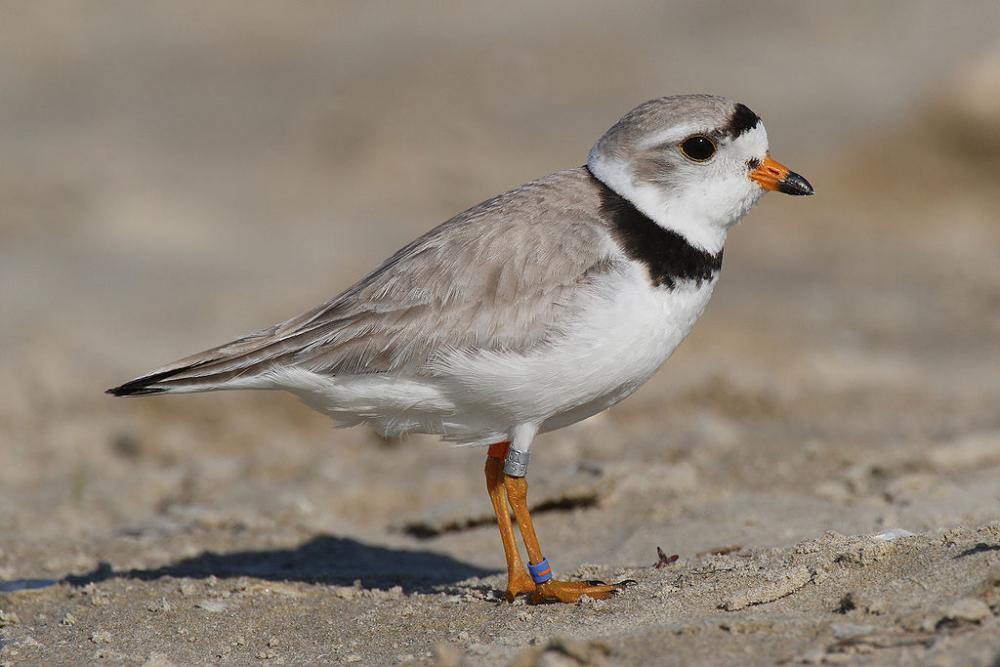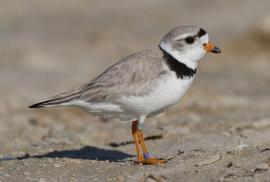Guide to Boreal Birds
Overview
The color of dry sand, the Piping Plover is difficult to see on the beach. The eggs and downy chicks also blend with the sand. The Piping Plover arrives much earlier in spring and departs for the South much earlier in fall than does the Semipalmated Plover.
Description
6-7" (15-18 cm). A pale plover with sandy upperparts, narrow, incomplete black breast band, stubby bill with an orange base, and yellowish legs. Young birds are similar, with black bill and broken gray breast band. Snowy Plover has thin black bill and black legs. Semipalmated Plover has much darker upperparts.
Voice
A clear, whistled peep-lo.
Nesting
4 buff-white eggs, evenly marked with small dark spots, in a depression in the sand lined with pebbles and bits of shells.
Habitat
Bare, dry, sandy areas, both inland and on the coast.
Range/Migration
Breeds along Atlantic Coast from Quebec and Newfoundland south to North Carolina, and locally from Alberta east to Minnesota and Great Lakes. Winters on Atlantic and Gulf coasts, north regularly to Carolinas.



